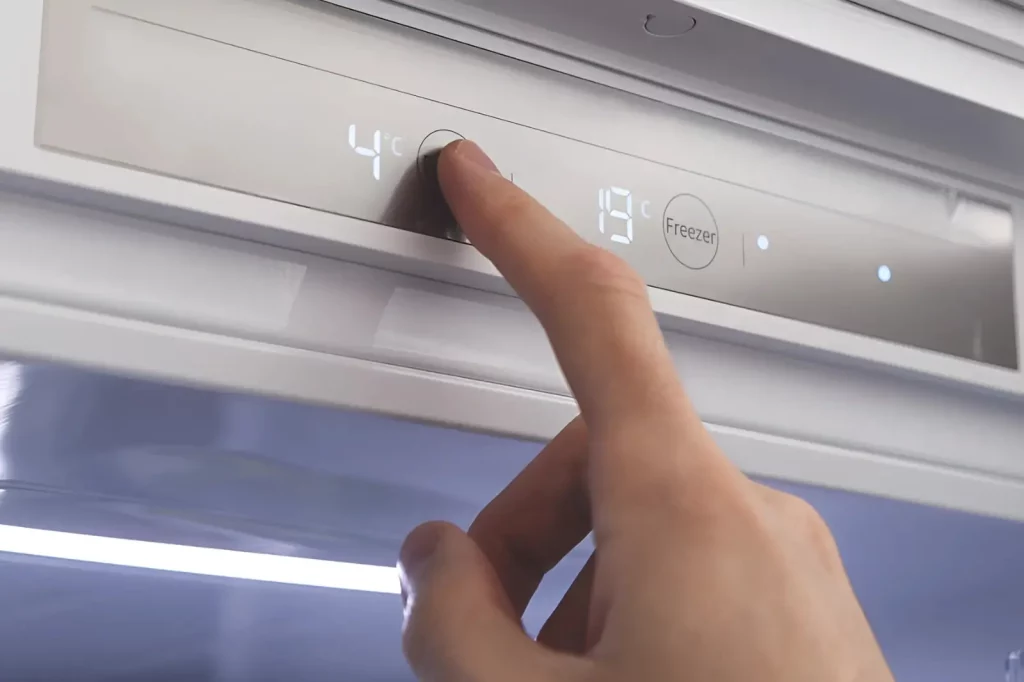How to Fix a Smelly Refrigerator: Easy Cleaning Tips

A smelly refrigerator can throw off your entire kitchen vibe—filling the air with unpleasant odor and souring your mealtime experience. Whether dealing with spoiled food, lingering cooking scents, or random spills, ignoring the foul smell can lead to bigger headaches like mold, bacterial growth, or compromised food safety. In this blog, we’ll detail how to fix a smelly refrigerator using clear, easy cleaning tips—from removing stuck-on residue with warm water and vinegar to adopting better storage practices. With a well-maintained fridge, you’ll preserve freshness, enjoy tastier meals, and protect your appliances long-term.

Identify the Source of the Smell
A smelly refrigerator typically starts with a specific cause. Rooting it out early helps you focus on the correct fix:
- Spoiled items or rotten food in corners
- Residual spills from juices or sauces that might collect under drawers
- Excess moisture or mold in the freezer compartment
- Food bits stuck around seals or in hidden crevices
Locating that cause is vital for successful deodorizing and ensuring a consistent fresh scent going forward. Without pinpointing the culprit, you risk seeing the bad smell return.
Thoroughly Clean the Interior of the smelly Refrigerator
Basic Steps for a Deep Cleaning
- Power Down: Unplug or switch off the fridge so you can safely conduct a full wipe-down without risking electric issues.
- Unload Items: Transfer your perishables, frozen food, and other goods to a cooler or keep them on a countertop temporarily.
- Prepare a Solution: Mix warm water and a bit of mild dish soap or a cup of vinegar. This gentle approach eliminates stuck-on grime and freshens surfaces.
- Scrub Gently: Use a sponge or soft cloth dipped in the solution. Tackle visible food residue, especially along shelves, corners, and the back walls.
- Rinse and Dry: Wipe everything with fresh water to remove leftover soap or vinegar. Use a clean towel or paper towel to speed up drying and stop excess moisture.
Be thorough, especially if you sense the smell persists. A missed spot—like hidden bits of produce or sauces—can remain a breeding ground for mold or unpleasant residue.
Remove and Clean Shelves and Drawers
Why Disassembly Helps
Shelves, crisper drawers, and even adjustable racks can harbor food splatters. Pulling them out ensures no sticky or rotting bits remain. Neglected corners behind these compartments often allow bacteria growth or foul odors to thrive.
Easy Process
- Unclip or slide out all removable trays or bins.
- Soak them in warm water and soapy water in your kitchen sink, adding a dash of lemon or white vinegar for deodorizing power.
- Use a soft cloth or sponge to scrub gently, then rinse everything with hot water.
- Dry thoroughly with a clean towel or set them on a paper plate to drip dry.
This systematic approach clears away stuck-on sauces or food gunk that might otherwise linger and degrade your fridge’s performance.

Check for Spoiled or Expired Food Items
Spot Rotten Foods
Look for food items with mold, off-colors, or weird textures. Rotten food or unpleasant liquids cause unwanted smells that permeate your entire fridge. Even a single lemon wedge that’s turned mushy can generate an unbelievably strong odor.
How to Dispose
Remove them promptly to a sealed trash bag, preventing food residue from spreading. If any liquid or slimy film remains on shelves or the fridge floor, wipe it with warm water and mild soap. Failing to discard spoiled foods quickly can lead to cross-contamination of other items.
Use Natural Deodorizers to Neutralize Odors
Baking Soda and Its Effectiveness
Baking soda—or sodium bicarbonate—ranks among the best-known fridge deodorizers for soaking up bad odors. A small open container of baking soda placed on a shelf can neutralize that stale or “funky” odor. Replace the box every time it loses potency, which typically occurs in a few weeks.
Activated Charcoal for Odor Absorption
Similar to baking soda, activated charcoal traps organic molecules behind unpleasant scents. Placing a few lumps or a small sachet on a paper plate can yield a fresher environment within days, controlling musty or leftover food smells from older items.
Vinegar as a Cleaning Agent
A mixture of water and white vinegar is a potent, natural tool for both sanitizing and odor-fighting. Vinegar’s acidic properties loosen grime and kill bacteria, diminishing the chance of leftover residue fueling mold. A quick wipe or cloth soak in vinegar also eliminates random foul smells that standard soap might not address.
Implement Proper Food Storage Practices
Organizing with a “First in, First out” Approach
Avoid letting produce or packaged goods linger until they rot unseen in the back. By placing newer groceries behind older ones, you ensure older items get used first. This approach stops neglected containers from creating pungent “surprises” over time.
Use Airtight Containers for Strong-Smelling Foods
Items like marinated fish, spiced leftovers, or leftover onion can spread a bad smell if unsealed. Placing them in sealed glass or plastic boxes with tight-fitting lids reduces moisture escape and halts odor migration. This step also helps maintain a fresh environment that won’t taint your other produce.
Monitor and Adjust the Refrigerator Temperature
Why Temperature Matters
Maintaining a correct temperature (around 37°F-40°F for the main fridge, 0°F for the freezer) staves off food spoilage and bacterial growth. If your fridge runs too warm, items degrade faster, creating strong or persistent odors. If it’s too cold, certain produce or drinks may freeze or inadvertently leak.
Temperature Variation
Regularly check the internal gauge or add a separate refrigerator thermometer. Once a month, verify your settings to ensure no accidental dials or temperature fluctuations hamper performance. If the fridge is too cold, you might see ice forming near drawers or a partial freeze. Too warm, and milk or fresh produce can degrade quickly.

Clean the Condenser Coils and Drip Pan
Condenser Coils
Hidden behind or below the fridge, coils play a crucial role in dissipating heat. Coils coated in dust or pet hair degrade the fridge’s efficiency, causing moisture buildup or higher internal temperatures. Use a coil brush or vacuum nozzle once every couple months for a thorough dust removal, which also lowers energy costs.
Drip Pan
A drip pan accumulates water from defrost cycles and evaporates it over time. If neglected, it becomes a breeding ground for mildew or bacterial growth, fueling unpleasant smells. Slide out the pan gently, empty excess liquid, scrub with mild dish soap, then rinse before returning it in place.
Regular Maintenance Tips for a Fresh Fridge
Schedule Consistent Cleaning Routines
Plan a thorough wipe-down of the fridge interior at least every 3-4 weeks, removing expired items and food bits that cause hidden odors. Wipe the inside walls, shelves, door compartments, and the freezer section using warm water or a gentle soap solution.
Check for Leaks and Condensate Issues
Occasionally inspect water lines in fridges with built-in dispensers or ice makers. A small water leak might not flood your floor but can still create damp spots that breed mold behind the fridge or near the kick plate. Confirm your water filter and tubing connections remain tight, ensuring no slow drips.
How Can Toronto Refrigeration Help?
Toronto Refrigeration has built its reputation around exceptional quality and reliable service for appliances across Toronto. Our skilled technicians handle everything from challenging fridge repairs—like diagnosing a failing ice maker or replacing worn door seals—to addressing persistent smelly refrigerator conditions. Whether you’re dealing with foul odors, a water dispenser that’s suddenly leaking, or a freezer that’s lost moisture control, we stand ready to deliver cost-effective, comprehensive solutions. With our combination of advanced diagnostic methods and unwavering dedication to customer satisfaction, every repair or maintenance call ensures your food stays fresh, your fridge runs efficiently, and your kitchen remains odor-free.
Conclusion
Tackling a smelly refrigerator is simpler when you trace its unpleasant odor to overlooked spills, stale food items, or neglected compartments. By thoroughly wiping surfaces with soapy or vinegar solutions, using baking soda or coffee grounds to absorb persistent bad smells, and consistently rotating or sealing your groceries, you maintain a fresh and sanitary fridge environment. Adopting a structured maintenance routine—from regular coil checks to drip pan cleanouts—extends your fridge’s lifespan. If persistent odors remain, entrust experts like Toronto Refrigeration to diagnose deeper issues and restore that crisp, pleasant scent.